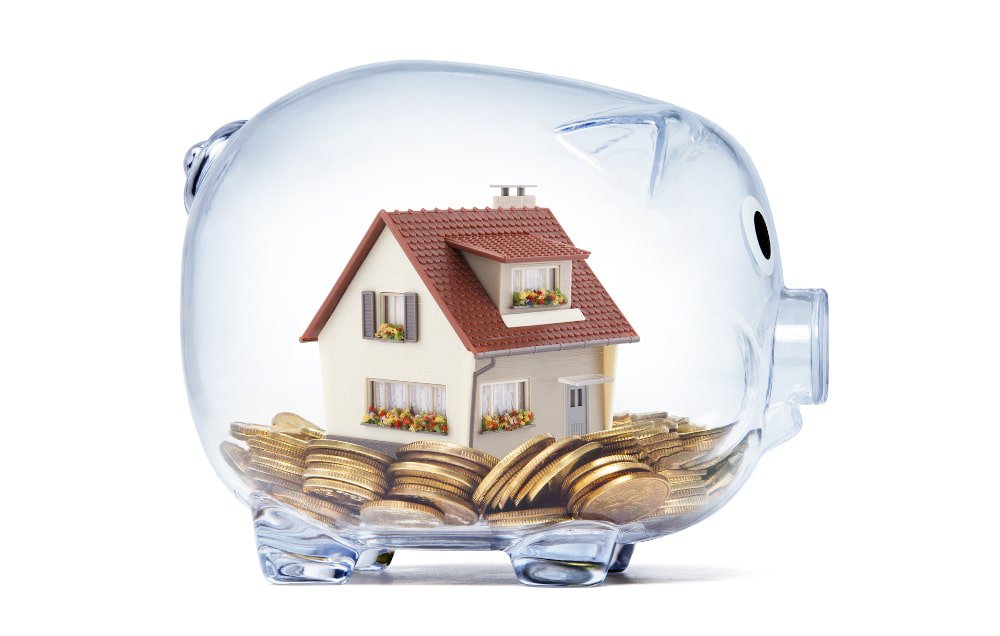Pros and Cons of 5% and 20% Down Payments

As the President of Clover Mortgage , I know for sure that one of the most important decisions most buyers make when buying a home in Canada is how much cash they are putting down. There's all the difference between the world concerning affordability, mortgage terms, and long-term financial stability between a 5% and a 20% down payment. While a smaller down payment has the appeal of getting into the housing market sooner, sometimes a much larger down payment offers economic advantages, helping you save money over the long term. This guide will delve into both the pros and cons of each option to help in arriving at your decision.
The 5% Down Payment: Pros and Cons
According to Victoria Ishai , Mortgage Agent at Clover Mortgage: “ The minimum prescribed down payment for an insured mortgage in Canada is 5% down for homes under $500,000-this is quite a steal for first buyers just trying to get into the market”.
Of course, this comes with a couple of trade-offs for buyers. Here are some pros and cons for buyers to consider:
Pros
- Easier Market Entry : These smaller barriers to entry-market participation make it easier when trying to save for a deposit of only 5% versus 20%. They can make the most of the current market. For instance, 5% of a house that cost $500,000 requires $25,000, while 20% will require $100,000. Thus, it means the barriers to entry are way lower for young or first-time buyers who want to transition from renting to home ownership.
- Flexibility in High-Cost Areas : This 5% level allows more people cramped by surging costs of living in cities like Toronto and Vancouver to afford homes they otherwise might not be able to buy. This is key for anyone trying to get an entry-level home or condo in a hyper-expensive city.
- Potential for Appreciation : A buyer who enters the market earlier realizes an appreciation in property value, especially for areas that are growing fast. For example, even with a yearly gain in the house's value of just 5%, entering the market a whole year earlier with a smaller deposit will generally cover additional costs associated with the higher loan-to-value ratio.
Disadvantages
- Mortgage Insurance Costs: The use of only a 5% downpayment employs mortgage insurance via CMHC. Though the insurance covers the lender in case of defaults, that is an added cost that the borrower must endure. For instance, with a 5% down payment, a home purchased for $500,000 carries an insurance premium against default via CMHC of $19,000, which normally gets tacked on to the mortgage balance. This increases the overall amount borrowed and correspondingly hikes the monthlies.
- Higher Monthly Payments : The more money borrowed, the larger the monthly payments. Compare using a 5 down payment calculator: on a home costing $500,000, the monthly payments are going to be more in comparison to putting 20% down. That tightens up the month-to-month budgets of buyers and doesn't leave much room for wiggling about savings or emergencies.
- Slower Equity Compounding : The higher the loan-to- value , the slower the building up of any equity in a home leaving buyers in a precarious position of being exposed to market fluctuations. If the market fell, they would be at risk of owing more than their home was worth.
The 20% Down Payment: Pros and Cons
A 20% down payment is touted as the gold standard when it comes to Canadian homebuying: it requires much more significant upfront savings, perhaps, but its advantages extend to long-term financial stability. Here's what you need to know.
Advantages
- No Mortgage Insurance: One of the most compelling benefits of a 20% down payment mortgage is the elimination of CMHC insurance costs. On a $500,000 home, this could save you $19,000 or more, significantly reducing your overall borrowing costs. These savings can be redirected into investments, renovations, or emergency funds.
- Lower Monthly Payments : The larger the down payment, the smaller the loan amount; hence, the monthly payments will be smaller. In this way, compared to making a 5% down payment, making a 20% down payment on a $500,000 house decreases one's monthly mortgage payment by freeing up more of the income. This low financial load makes it easier to qualify for further credit or loans because your debt-to-income ratio is smaller.
- Faster Equity Growth : With its low loan-to-value ratio, buyers can quickly gather equity, which might be of much help and importance for refinancing or selling the property shortly. A strong equity position provides a buffer against market decline so that homeowners are less likely to face negative equity.
Disadvantages
- Longer Savings Period : In saving $100,000 for a down payment toward a house valued at $500,000, it could take a few years before entering the housing market . Property values may have appreciated even further within this time and hence make one's dream of owning a house unaffordable. This extra wait further increases expenditure on rent, which does not add value from a long-term financial investment perspective.
- Reduced Liquidity : Putting a large sum of money down reduces liquidity, leaving tiny amounts for other investments and/or in emergencies. This usually triggers financial stress, especially if some unforeseen expenses arise a short time after buying the home.
- Opportunity Cost : A 20 down payment mortgage means that the amount of money can be used elsewhere, probably for better returns. The appreciation of a stock market or investment might prove higher in the future when compared to the interest to be saved due to a higher down payment.
Comparing 5% and 20% Down Payments
The following table highlights the key differences between a 5% and 20% down payment on a $500,000 home:
| Criteria | 5% Down Payment | 20% Down Payment |
|---|---|---|
| Down Payment Amount | $25,000 | $100,000 |
| Mortgage Insurance | Required ($19,000) | Not Required |
| Loan Amount | $494,000 | $400,000 |
| Monthly Payments | Higher | Lower |
| Equity Building | Slower | Faster |
Choosing the Right Option for You
Whether it's worth putting 5 percent or 20 percent down is entirely a matter of the buyer's financial situation, aims, and the state of the housing market they're entering. Here's what to consider:
- Your Savings : Assess just how much you have saved, and how long until you reach a 20 percent down payment. If saving for a big down payment is going to drastically push back your entry into the market, the 5 percent may be your better option.
- Market Conditions : The earlier one gets in, the better, in cases of rapidly appreciating markets; in more stable markets, the benefit in the long term may go to the one who saves 20%.
- Monthly Budget : A 5% down would give room for flexibility if you're not bothered by higher mortgage payments with the added cost of mortgage insurance factored in. Conversely, if you want to minimize your costs each month, then it's better to go with the 20 down payment mortgage option.
- Financial Goals : Consider other big-picture items, including other goals such as how much is needed in emergency savings, retirement, and other investments.
"The size of your down payment greatly impacts your position financially in your home. Putting 5% down can get you into the market sooner while putting 20% down will save you a lot over the life of your loan. Consider carefully your long-term goals before you decide."
— Steven Crowe, Commercial Mortgage Agent Level 2 at Clover Mortgage
Conclusion
Among the most important decisions involved in buying a house is choosing between 5% and 20% down payments. Each has numerous pros and cons, and the best will relate to one's financial positioning, goals, and the market condition at that particular time. Therefore, this should be a balanced decision based on weighing up the pros and cons to best suit your needs.
Let our experts at Clover Mortgage help you make the right decision regarding your financial future. We will take you through the process, make option comparisons, and find a mortgage solution that works for you. Contact us to take the first confident step in attaining your goal today.
FAQ
Is it a good idea to buy a house with 5% down?
Yes, especially if saving for a larger down payment would significantly delay your market entry. But, it is advisable to prepare yourself for higher monthly repayments and the extra cost of mortgage insurance.
Is it worth it to put down 20%?
Yes! A 20% down payment can eliminate mortgage 20% down payment insurance costs, reducing month-to-month payments and building equity much more rapidly for huge long-term savings.
What’s the benefit of having a 20% down payment?
Putting 20% down offers quite a few financial benefits, such as not having to pay CMHC insurance , a lower month-to-month payment, and better terms on mortgages; for many buyers, it's well worth it.
Is 5% enough for a down payment?
Yes, 5% can be enough to purchase an insured mortgage in Canada for less than $500,000. But it includes higher costs and also means slower equity growth than a larger down payment would provide.





